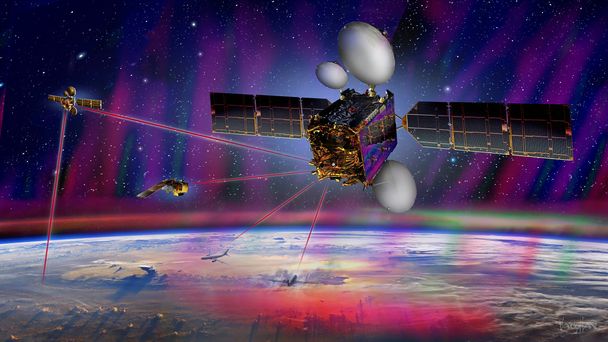The background of laser communications

The background of laser communications
Yoann Jezequel, Innovation and Future Concepts Strategic Manager, explains the various characteristics of laser communications.
Casting light on laser communications
The term laser comes from the English acronym for Light Amplification by Stimulated Emission of Radiation. This beam of coherent radiation is ubiquitous in the world of today. They are used daily, be it in the medical sector, for reading bar codes, for playing CDs, guiding missiles, destroying targets, cutting materials, in telecommunications or metrology, to mention just a few of its applications.
In this article we will focus specifically on the area of laser communication in free space, known as Free-Space Optics (FSO).
What are the advantages of free-space laser communication?
The main advantage of free-space laser communication lies in its ability to offer very high-speed broadband (offset to reach Tbit/s before the end of the decade), a data rate that far exceeds those achieved with conventional radiofrequency technologies.
Furthermore, a laser is intrinsically highly directive and therefore virtually impossible to intercept, jam or triangulate. This characteristic also represents a definite technical and operational advantage, particularly in military applications.
From a strictly regulatory viewpoint, laser communications are not subject to the regulations of the ITU (International Telecommunication Union) and the associated administrative formalities, i.e. obtaining local radiofrequency emission authorisations
What are the constraints of free-space laser communication?
The major constraint for FSO communication lies in the atmospheric conditions, or in other words, the weather! This means that cloud or thick fog can substantially disrupt the link, or even cut it off. FSO communication remains highly sensitive to the quality of the atmospheric propagation channel.
The pointing of a laser communication terminal requires extreme precision. It is therefore necessary to create a sufficiently effective slaving solution to be able to aim at the receiver.
In the next article, you’ll learn more about the maturity of the laser communications technology.